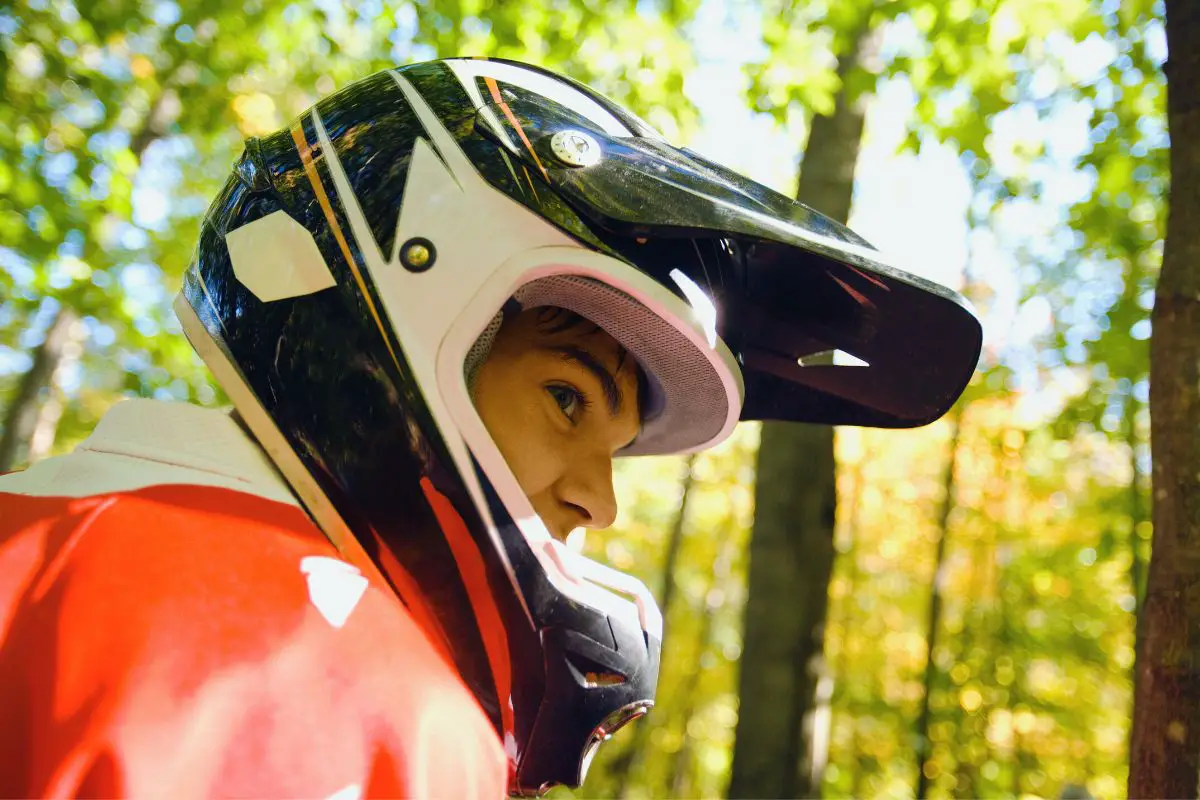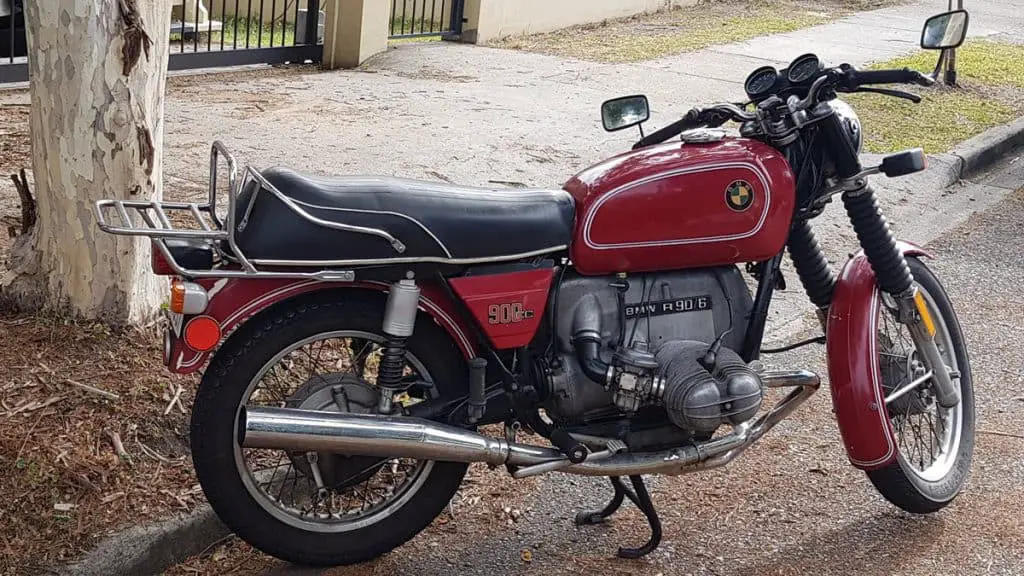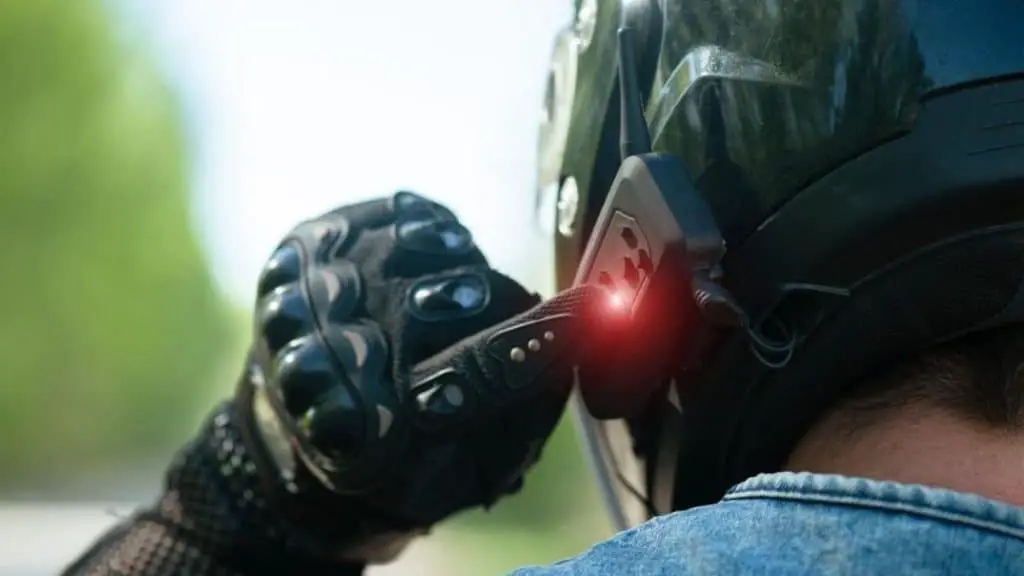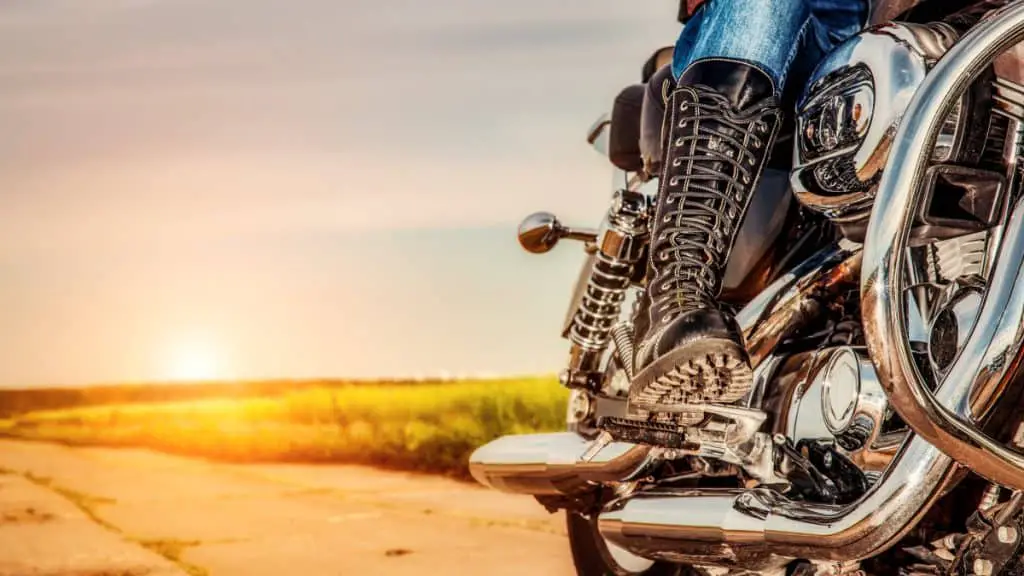Why Do Dirt Bike Helmets Have Visors (+ How They Are Different From Street Helmets)
We all know what helmet visors are. In fact, I can’t imagine riding out on a bright day without wearing my helmet with the tinted visor.
But what about dirt bikes? And why are the visors in dirt bike helmets different?
Great questions.
To find out the answer, we will start with the history of glass making in Mesopotamia 3600 years ago.
Just joking!
The fact is, the type of visor design in any helmet depends on its functionality based on the ride conditions.
So let’s get down to it.
What Is the Purpose of a Visor on a Helmet?
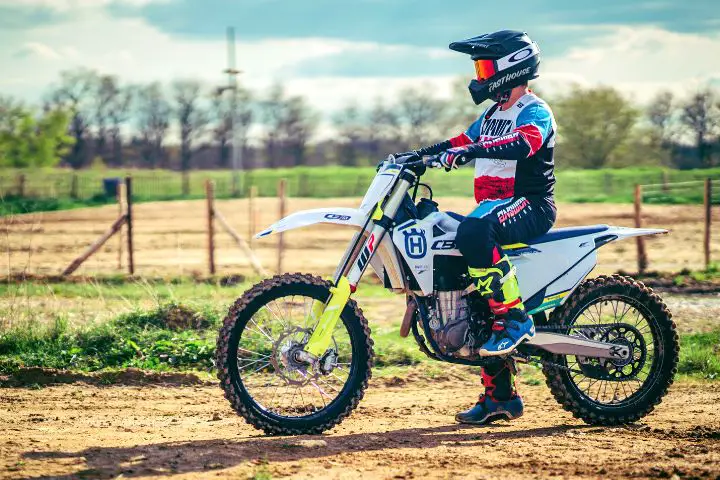
The visor, often called a face shield, is a piece of curved optical polycarbonate shield that’s attached to the front of a motorcycle helmet with a hinged connection. The main purpose of the visor is to offer protection for your eyes and face from all types of flying debris—including bugs.
Polycarbonate is the preferred material as it has excellent impact resistance. It also has good light transmissive properties.
The fact is, exposure to strong light for prolonged periods can cause eye fatigue. And if your eyes are super sensitive to bright light like mine, riding in the mid-day sun can be a pain.
Besides, glare from reflected surfaces can cause disorientation. And at high speeds, it can be deadly.
So tinted visors act like sunglasses to reduce glare and protect the eyes from UV light. That makes it easier for long-distance motorcycle riders.
This is achieved by adding special additives or chemical hues to the molten polycarbonate material during manufacturing.
Ok, but what about dirt bikes?
Technically, the dirt bike helmets don’t have a typical visor, but a peak made of plastic or glass that extends over the eyes. And with time, they have become an iconic aspect of all dirt bike helmets.
These visors are usually made of plastic. Some top-end helmets are made from carbon fiber. These visors can be removable or non-removable depending on the helmet design.
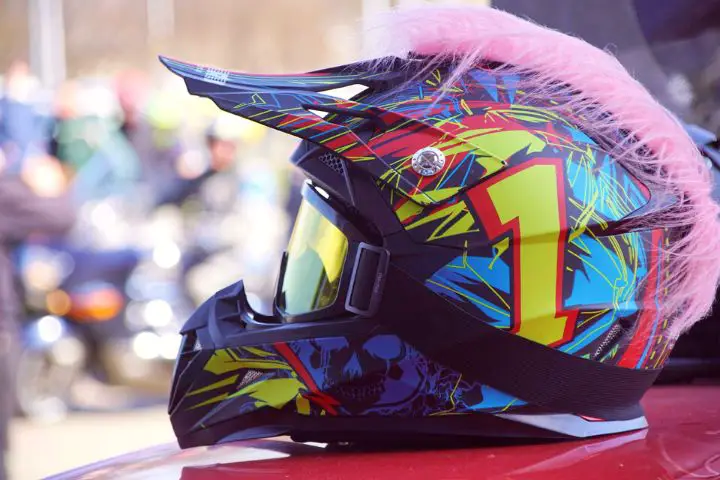
Detachable visors are usually wider and offer better protection against roost and rain. Now, some riders believe that longer visors can break in case of an accident and cause injury to the face.
Now, a dirt bike crash is different from a motorcycle crash. In a street accident, the rider can slide over the pavement. Since this doesn’t happen on a dirt trail, the chances of damage from a visor are minimum.
The main purpose of the peak is to protect your eyes from the dirt and rocks (more correctly, roost) thrown up by the tires of the rider ahead. Without the peak, your goggles would get caked with slushy goo in no time, on a muddy trail.
Besides, riding on a dirt track automatically results in flying sand and rocks. There can also be the occasional tree branch on a wooden trail that can cause damage.
Even though you are wearing the goggles, the peak is a safety guard against all these larger objects.
Obviously, it also serves the added purpose of keeping the sun out of your eyes. With the sun flickering through the trees, negotiating a steep descent can be much harder. In fact, you can think of a visor serving the same purpose as a baseball cap.
When it’s raining, a well-designed peak will also prevent the water droplets from obstructing your vision.
That said, there are some riders who feel that the peak catches branches and tall grass too easily in wooded trails. So many of them use a helmet with an easily removable peak. Overall, it’s a matter of individual preference
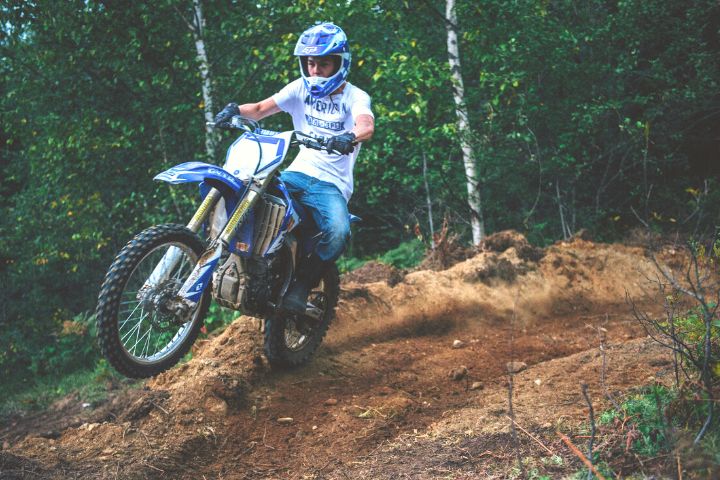
Why Are Dirt Bike Helmets Different Than Motorcycle Helmets?
Ever compared a street helmet (whether modular or full-face) with a dirt bike helmet?
Then you must have noted that the former is more aerodynamically shaped.
The reason is, motorcycles travel at higher speeds and reducing aerodynamic drag is necessary. Basically, it’s caused by the turbulent flow of air over the helmet at high speeds.
Notice those special deflectors or fins integrated into the helmet?
These are design features to refine the overall aerodynamics of the helmet. That’s why the choice of a helmet can have significant impact on your ride experience.
No wonder helmet profiling is a crucial factor for top racers.
The best motorcycle helmets also come with more padding to reduce noise. They are also designed to absorb high-impact stress for protecting the rider’s head in event of a crash. A protective inner shell in each helmet protects the skull by cushioning it.
One more thing…
A motorcycle helmet may seem like a fully enclosed unit, but there are small air vents in it to allow airflow. These prevent fogging of the visor in hot and humid conditions. There are also a couple of exhaust vents at the back end.
Now, at lower speeds (usually less than below 30mph) there isn’t sufficient airflow inside the helmets to prevent fogging.
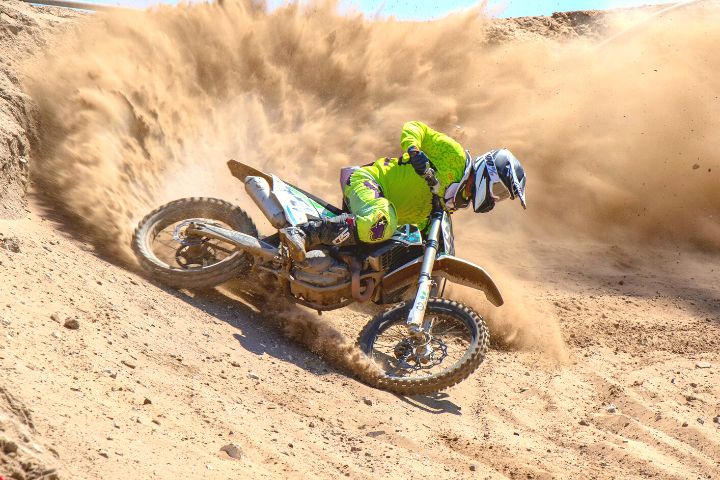
However, a full-face helmet isn’t necessary for dirt bikes as the riding conditions are different. Here are the main reasons.
- Off-road riding is more physically demanding than on-road driving
- Riding a motorcycle involves much higher speeds
- Off-road rides involved more dust and debris
- The airflow over the helmet during dirt bike riding is not so high
Since dirt bike riding involves more physical effort, your breathing rate is higher. Not to forget your pulse rates and blood pressures due to all that excitement.
And the result is—more heat and more sweat.
That demands increased ventilation through the helmet to reduce rider discomfort (and cool your head). For these reasons, dirt bike helmets come with an open-face design. An added benefit of that is you get better visibility.
That’s also the main reason for these helmets being much lighter. Riding through the trails wearing a heavy street helmet can be too tiring.
While dirt bike riding at low speeds, a street helmet with a visor will fog up easily, especially in humid conditions. An open-face design allows more airflow and prevents heat build-up.
Since aerodynamics isn’t important at lower speeds, these helmets also have a pointed chin. Such a design provides more space within the helmet, aids with airflow, and helps you to breathe without much effort.
The vented goggles that you use with dirt bikes are less likely to get fogged than a visor. They come with a snug fit to prevent the entry of dust and sweat into the eyes. Ideally, the combination of the helmet and the goggles should leave minimum open skin that is exposed to flying debris.
Street helmets with shields won’t be able to keep your face protected from dust. Rather, the dust will enter through the small vents and through the space below the chin bar into the enclosed space.
Likewise, you’ll find that wearing a dirt bike helmet during on-road trips is uncomfortable in many aspects.
Even if you ride at relatively lower speeds, the wind noise will be an issue. (And if you’re determined to give it a try no matter what, here are tips to reduce it.) And during winters, it will be extremely cold. Most importantly, it could be a safety issue in case of a crash.
In short, switching these two types of helmets is a bad idea.
In case you have a street-legal dirt bike, I’d suggest that you use both types of helmets as needed. That will help you to ride comfortably based on the conditions.
Frequently Asked Questions
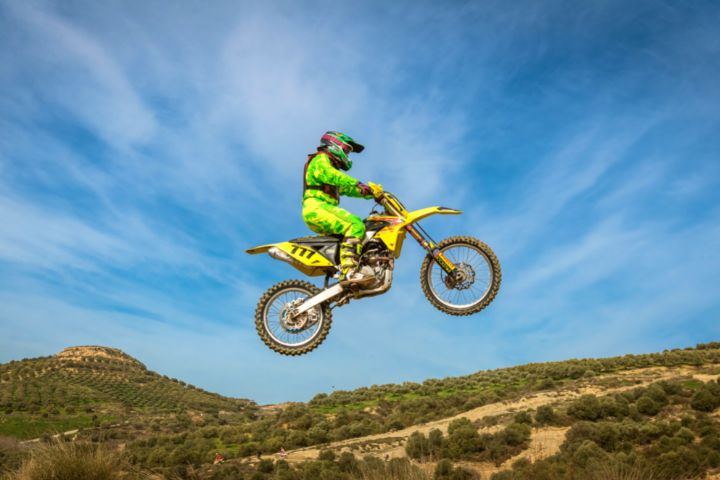
What Are the Downsides to a Dirt Bike Visor?
Dirt bike visors are best for trails and not suited for high-speed riding. Since they are not aerodynamically designed, they will produce more air resistance. Also, they don’t have the tough build quality of motorcycle helmets. So the amount of protection offered is limited.
Is a dirt bike helmet visor necessary for trail riding?
Yes, a dirt bike visor is necessary while riding over dirt trails. It will help in keeping your face protected from the flying dirt, debris, and also rainwater. And even if you are not into high-adrenaline competition riding the visor will protect your eyes from the sun.
Can you wear a dirt bike helmet on the street?
Wearing a dirt bike helmet on the street isn’t a good idea both in terms of safety and comfort. Dirt bike helmets are not designed for high-speed riding and lack aerodynamic features. Besides, the extra airflow will result in extreme wind noise at higher speeds.

